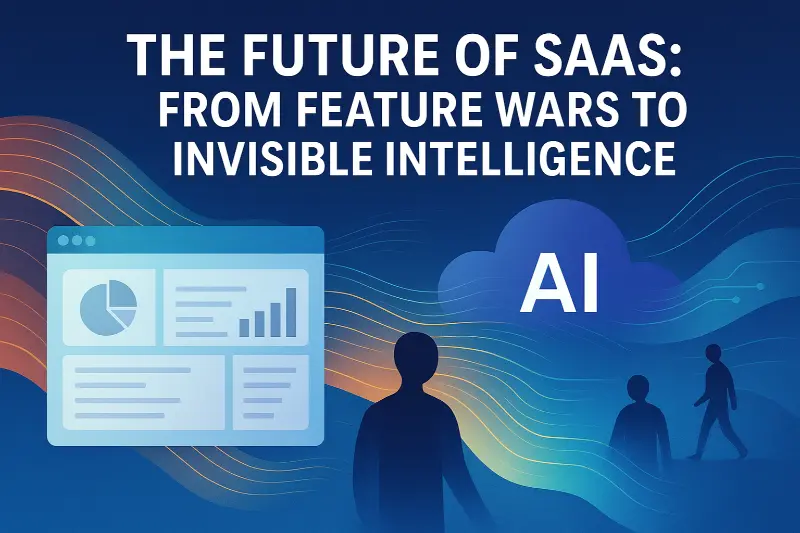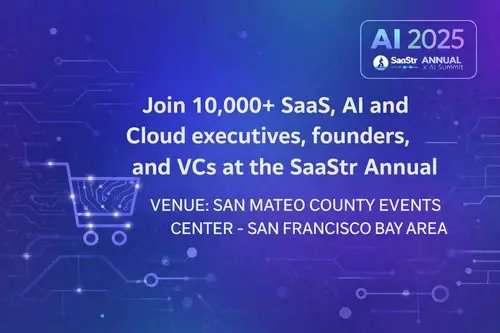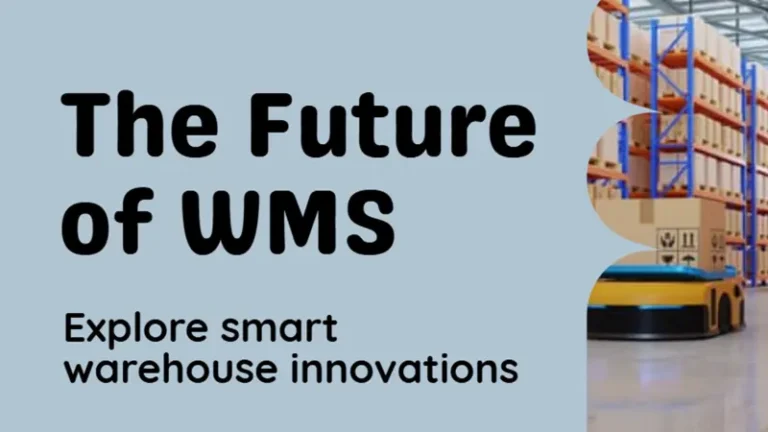The Future of SaaS: From Feature Wars to Invisible Intelligence

Last updated on August 27, 2025

The SaaS world is changing faster than most of us realize. For years, software companies competed in feature wars, packing in dashboards, toggles, and modules like they were stocking a buffet. The SaaS model has historically dominated the software industry, driving the ongoing SaaS revolution that continues to transform how businesses operate. Now? Businesses don’t want more features. They want results. They’re done with juggling complex tools; they want outcomes, automation, and systems that just work.
At Cahoot, working with ecommerce brands every day, we see this shift up close. Retailers are tired of logging into five different apps to ship a single order or analyze a single metric. Unlike traditional software, which required on-premise installation and significant upfront investment, cloud-based SaaS has enabled scalable, accessible solutions delivered over the internet. They want software that solves problems quietly, without adding to their workload. This shift is not only changing how software is delivered, but is also reshaping the overall SaaS landscape and business model for software companies. That’s where SaaS is heading: from feature-heavy to invisible intelligence, AI-powered systems that deliver results in the background.
Slash Your Fulfillment Costs by Up to 30%
Cut shipping expenses by 30% and boost profit with Cahoot's AI-optimized fulfillment services and modern tech —no overheads and no humans required!
I'm Interested in Saving Time and MoneyFrom Features to Outcomes: SaaS Grows Up
The feature-first era was inevitable. Competition exploded, and SaaS providers fought to stand out by adding more and more. It worked for a while. But now, the market is saturated. Enterprise buyers face dozens of options for every function. Most use only a fraction of the tools they pay for. Current SaaS trends show that, to stay competitive, companies are evolving their pricing models, moving away from the traditional pricing model toward more flexible, outcome-based pricing models that better align with customer value. The question isn’t “Which software has the most features?” anymore; it’s “Which solution gets me the result with the least effort?”
This is the evolution of SaaS: from tools to services, from dashboards to deliverables. The best SaaS companies today measure success not by logins, but by outcomes, higher conversion rates, lower churn, and faster operations. Reducing customer churn and improving customer retention are now key business outcomes for SaaS companies, and innovative revenue models are being adopted to support these goals. And the ones that can’t prove that? They’ll lose.
Recent research backs this up: 90% of enterprise buyers expect AI-driven functionality in their SaaS tools, and AI-enhanced products are growing revenue 10% faster than their traditional counterparts. As revenue growth rates slow across the industry, new pricing models and revenue models are directly impacting business outcomes and helping companies maintain a competitive edge. In short, outcome-driven SaaS isn’t a trend; it’s table stakes.
The Rise of AI-Driven, Invisible Software
We’re entering the age of “zero UI”, or more accurately, invisible UI. Instead of training employees to master endless dashboards, AI agents handle the work and surface only what matters. Artificial intelligence, with its advanced AI capabilities and sophisticated AI models, is the driving force behind this transformation, enabling software to operate autonomously and intelligently.
Picture an ecommerce ops manager today: they log into a shipping app, check carrier rates, process orders, and handle exceptions. In tomorrow’s SaaS world, they don’t log in at all. The system automatically selects the best carriers, schedules pickups, and sends alerts only if something goes wrong. The software is invisible, but the results are very visible: lower costs, on-time deliveries, happier customers. In this future, AI tools and AI-driven solutions will automate processes (and automate workflows), leveraging machine learning to generate insights and streamline software development for even greater efficiency.
This shift is already happening. AI copilots are appearing in everything from CRMs to project management tools, and they’re evolving into full AI agents capable of executing tasks autonomously. It’s a tech revolution. And it’s going to redefine what “software” even means. The rise of no-code platforms is also democratizing software development in the SaaS industry, empowering more users to build and automate workflows without traditional programming.
Looking for a New 3PL? Start with this Free RFP Template
Cut weeks off your selection process. Avoid pitfalls. Get the only 3PL RFP checklist built for ecommerce brands, absolutely free.
Get My Free 3PL RFPTrust, Transparency, and Control
With invisible intelligence comes a new challenge: trust. If software is making decisions behind the scenes, approving refunds, reallocating inventory, users need confidence that it’s doing the right thing. Security concerns are paramount, as risks such as data breaches highlight the need to protect sensitive data (e.g., customer data) from unauthorized access and cyber threats.
The future belongs to SaaS platforms that balance automation with transparency. That means:
- Providing simple, plain-language explanations for AI-driven actions (“Shifted 200 units to avoid stockout based on forecasted demand”).
- Allowing selective oversight, logs, override options, and compliance safeguards.
- Ensuring data security and bias mitigation to build long-term trust.
- Implementing robust network security and secure cloud infrastructure to safeguard business data and maintain compliance.
In ecommerce and logistics, this is critical. Brands will only rely on AI to run fulfillment or manage customer interactions if they can see that the system is accurate, secure, and aligned with their goals.
Vertical SaaS: Smarter by Design
The shift to invisible, outcome-first SaaS is accelerating the rise of vertical SaaS, industry-specific platforms that deliver deep, tailored value. Generic tools can’t match the precision of a solution built for your exact challenges, especially when AI is layered in. Vertical SaaS solutions leverage business intelligence, data intelligence, and cloud-based solutions to address specific customer needs, enabling organizations to operate more efficiently and make smarter decisions.
We’re already seeing vertical SaaS leaders in ecommerce fulfillment, healthcare, and finance outperform broad, horizontal platforms. Why? Because domain-specific AI can optimize in ways generic software can’t. Cloud computing, customer experience, and customer engagement are central to these advancements, ensuring that SaaS solutions deliver maximum value through seamless integration and real-time responsiveness. For example, an AI-driven shipping platform can anticipate carrier rate changes, reroute shipments preemptively, and minimize costs automatically. That’s the kind of invisible intelligence ecommerce brands are asking for, and the kind Cahoot is building into our own solutions. Customer relationship management and creating exceptional customer experiences are now essential for vertical SaaS providers to drive loyalty and long-term growth.
Too Many Tools? AI Could Be the Fix
Ironically, while SaaS aims to simplify, businesses have never had more tools. Many manage dozens, sometimes hundreds, of separate applications. This leads to data silos, wasted spend, and operational drag. The complexity of managing diverse tech stacks and fragmented SaaS applications creates additional challenges for organizations seeking streamlined workflows and effective digital transformation.
AI could be the unifier. Instead of humans stitching everything together, intelligent agents will coordinate across multiple systems, pulling data, triggering actions, and delivering outcomes seamlessly. APIs will become the backbone; AI will be the brain. This integration not only improves operational efficiency but also supports business success by enabling proactive management and better customer outcomes. For ecommerce, that might mean one integrated solution managing orders, inventory, shipping, and returns with minimal human touch, replacing a patchwork of disconnected apps.
As the SaaS landscape evolves, business models of SaaS vendors are shifting, with the rise of micro SaaS targeting niche needs and impacting both public SaaS companies and broader SaaS businesses.
The Road Ahead: Adapt or Fall Behind
SaaS isn’t disappearing. It’s becoming something more powerful and more invisible. The winners will be those who combine AI’s adaptability with SaaS’s reliability, delivering measurable results without adding complexity. This reflects an ongoing paradigm shift in the SaaS market, where AI-driven solutions and innovative SaaS products are redefining how organizations operate and deliver maximum value.
For businesses, the takeaway is clear: start evaluating your tools not by how many features they have, but by how little work they leave for you. Leverage business data to drive better business outcomes, as highlighted in recent market research from Fortune Business Insights. Pilot AI-driven capabilities. Demand transparency and vertical expertise. And prepare for a world where software works quietly in the background, letting you focus on strategy, not screens.
Looking ahead, the growing importance of sustainable practices and achieving net-zero residual emissions will play a key role in shaping the future of SaaS.
Frequently Asked Questions
What Is “Invisible” SaaS and Why Does It Matter?
Invisible SaaS refers to AI-powered software that operates in the background, handling tasks automatically and surfacing only results. It matters because it reduces complexity and improves outcomes without adding to users’ workloads.
Will AI Replace Traditional SaaS Platforms?
Not entirely. AI will augment and automate many SaaS functions, but core platforms will remain as secure, reliable backbones. The future is AI-enhanced SaaS, not AI-only.
How Can Ecommerce Brands Prepare for This Shift?
Audit where you’re spending time on manual processes, test AI-enabled features from your current providers, and focus on tools that demonstrate real, measurable results.
Why Is Vertical SaaS Becoming More Important?
Industry-specific solutions with embedded AI can deliver better outcomes than generic platforms by leveraging domain expertise and tailored automation.
What Risks Should Businesses Watch in AI-Driven SaaS?
Watch for data security, transparency, and potential bias in AI decisions. Choose vendors with clear safeguards, compliance certifications, and explainable AI practices.

Turn Returns Into New Revenue


 8 minutes
8 minutes


